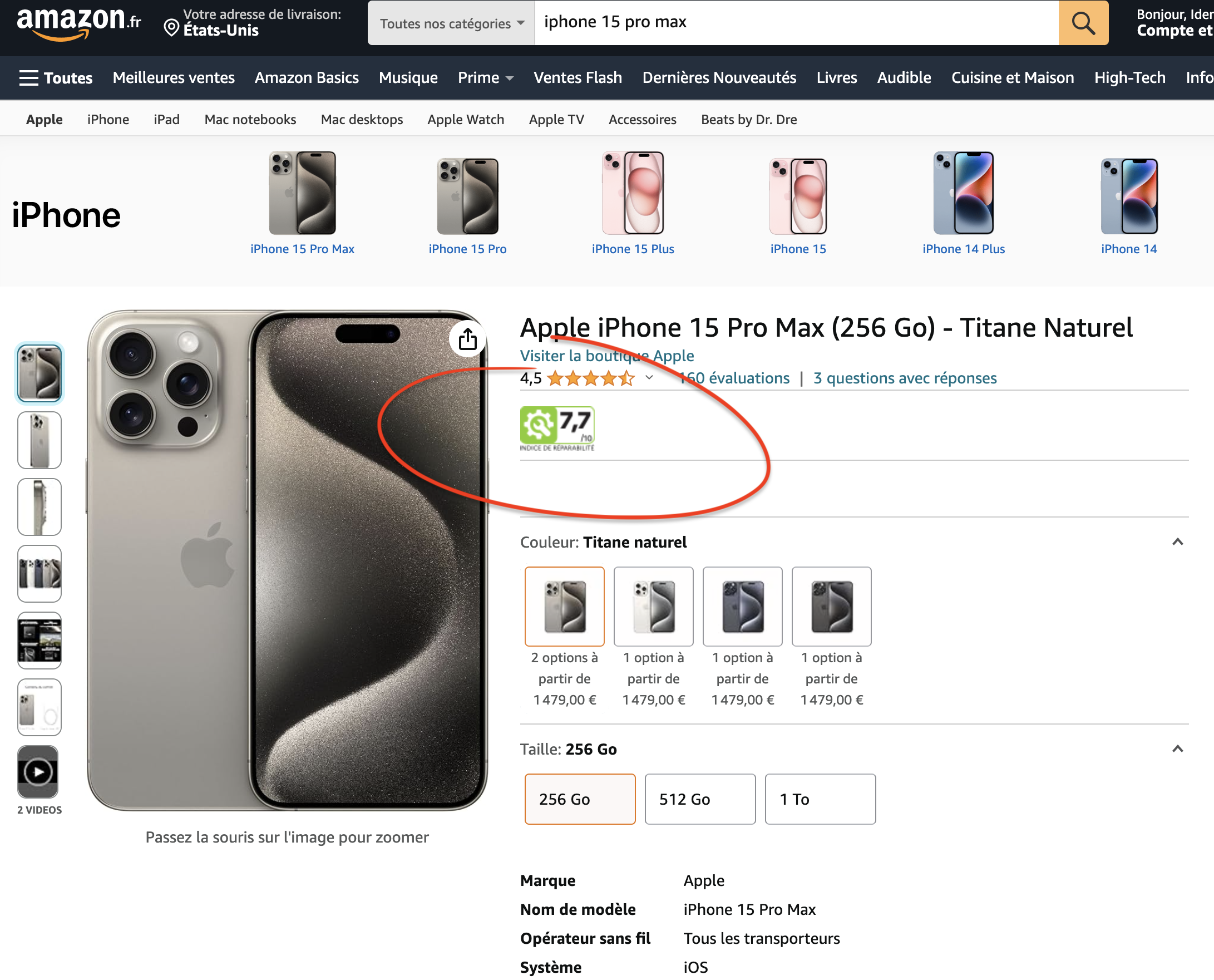
Tell Amazon: We need repair scores
We need Amazon to display a repair score from 0 to 10, which tells us how fixable a product is.
Environmental advocates support ‘Right to Repair’ legislation
We have a broken relationship with stuff.
We mine the earth for rare minerals, burn fossil fuels and consume hundreds of pounds of water to make our electronics — then throw the devices away a few short years later. Our discarded electronics often end up in landfills, where they leach harmful toxins from their circuit boards and plastics.
Repairing and reusing electronics is the best way to keep them out of landfills — and to maximize the energy and resources that went into making them in the first place. But many companies actively restrict independent repair. Doing so helps them sell more new products. By blocking access to replacement parts, specialty tools, schematics and diagnostic software, manufacturers of electronics are contributing to a throw-away culture.
Right to Repair legislation can fix that. By requiring manufacturers to provide access to repair parts and tools on reasonable terms, Right to Repair can help us use our devices for longer.
It’s time we have the right to fix the stuff we’ve bought. We are working to give Right to Repair efforts a boost by amplifying the voices of groups working on reducing our consumption patterns to zero waste, and other environmental advocates. Sign on behalf of your organization to show support for the Right to Repair, or sign on as an individual who cares about the toll our electronics are taking on the planet.
Sign on as a Zero Waste organization.
Sign on as an individual.
Our open letter from Zero Waste advocates:
As professionals, activists, and public officials working on reducing the waste stream, we recognize repair as a key strategy in the United States. We support Right to Repair legislation as a critical policy mechanism.
Electronic waste is the fastest growing waste stream in the world. The United Nations estimated that 59 million tons of electronic waste (e-waste) was generated in 2019, and that only 17 percent of it was recycled (pg. 9). That’s equal to 162 Empire State Buildings’ worth of electronics discarded annually. [1] At this rate, e-waste is rising three times faster than the human population.
E-waste is also dangerous. E-waste contains harmful toxins and is made up of 20 percent plastic. When landfilled or incinerated, e-waste can cause lead, mercury, cadmium, and chemicals in plastics such as flame retardants to threaten our health. Electronics recycling has failed to ameliorate the rise of e-waste or its environmental impact. The EPA estimates that only 35 percent of e-waste is recycled in the United States, with the rest going to landfills and incinerators.
The production of electronics is also a key contributor to climate change. For example, a single laptop emits about 550 lbs. of CO2 equivalent during production. Together, the annual consumption of laptops in the United States alone emits 150.6 billion lbs of carbon dioxide equivalent [2] — or the same amount of emissions generated from 17 coal plants in a year. [3]
The best way to slow the rise of e-waste is to keep our electronics in use as long as possible. Repair lets us do that. Repair lets us replace batteries, add memory and upgrade processing, all of which can prolong the lifespan of our electronics. Repair diverts usable devices away from landfills, and back into use. Not only does repair prevent waste, but it prevents natural resource exploitation. If cell phones were used for one year longer on average, the United States would save 7.8 million tons of raw materials per year.
While the environmental attributes of repair are clear, unfortunately manufacturers impose many barriers to repair in the U.S. Manufacturers often deny consumers and independent repair shops access to basic repair information, such as diagnostic software, manuals, replacement parts and specialty tools. Manufacturers also illegally threaten to void consumers’ warranties if they seek independent repair, or warn of safety hazards if a customer tries to repair a device themself. These practices inhibit repair and encourage consumers to buy more stuff.
Right to Repair legislation would make it easier for consumers and independent technicians to repair devices and keep them in use longer. Right to Repair legislation will lay the groundwork for us to repair our broken relationship with stuff, allowing more options, access and ease when it comes to repair.
Because repair plays an essential role in a circular and sustainable economy, Right to Repair legislation is critical to achieving a cleaner, healthier, and more prosperous future.
1. The Empire State building weighs 365,000 tons. 59 million tons/365,000 tons equals 161.6 Empire State buildings equivalent in e-waste. “Empire State Building Fact Sheet.” Empire State Realty Trust.
2. Americans buy 275 million laptops every year. 275.15 laptops/yr * 550 lbs CO2/laptop = 150.6 lbs of CO2 equivalent emissions per year.
3. Calculated using the EPA greenhouse gas emissions calculator.
We need Amazon to display a repair score from 0 to 10, which tells us how fixable a product is.
Add your name.